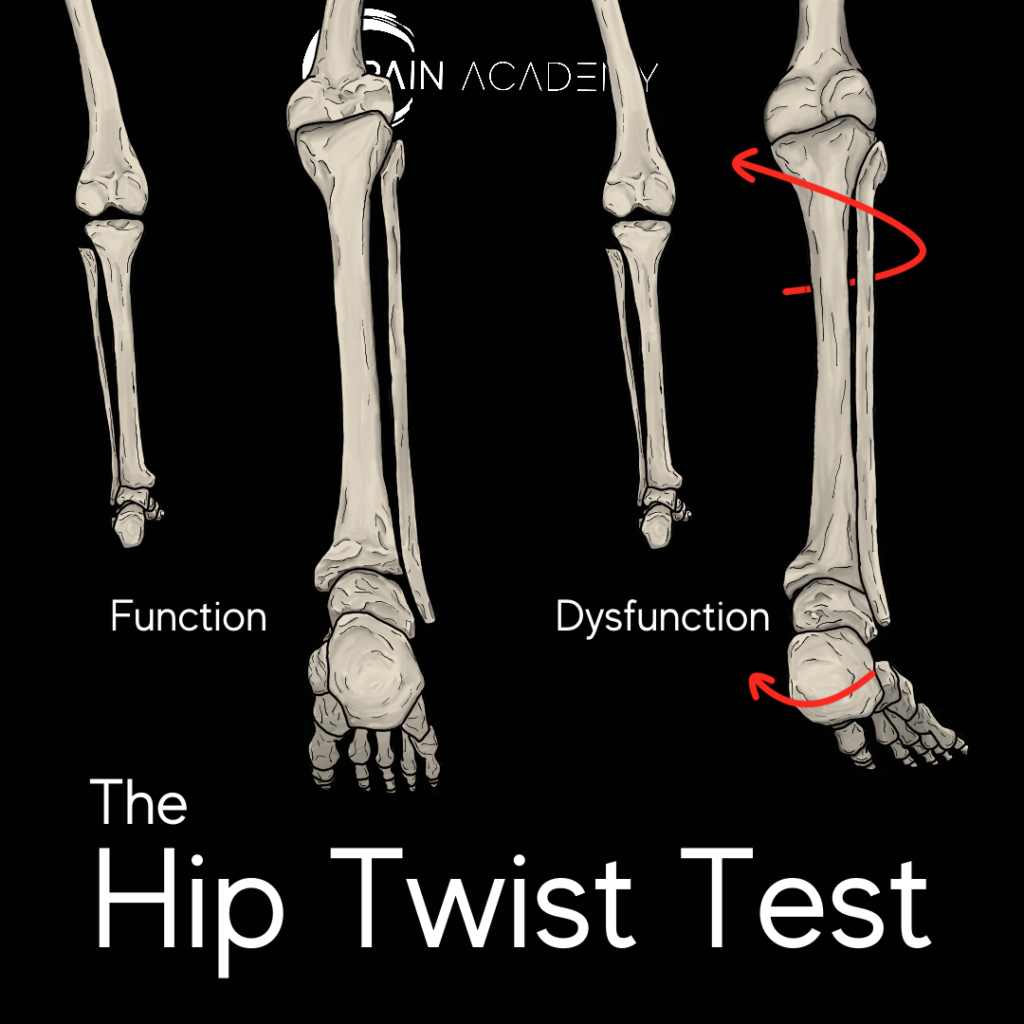
The Hip Twist Test is a really simple and easy way to check in on the health of your hips.
All that is needed to do this test is a camera and some space to walk back and forth in.
Step 1: Prop your camera up on a chair and video record yourself walking back and forth without shoes or socks on.
DON’T READ THE REST OF THIS UNTIL YOU ARE DONE RECORDING SO YOU DON’T INFLUENCE OR FABRICATE ANY UNNATURAL MOVEMENT.
Step 2: Review the video.
When the hips can rotate properly (left), the back leg will stay aligned as the heel lifts off the ground. The ankle, knee, and leg will maintain vertical aligned and move in a forward direction with each step.
If the hips can’t rotate properly (right), the heel of the back leg will twist and snap inwards when the heel lifts off the ground.
Let’s look at why this happens…
Every time the left leg steps forward, the left pelvis rotates forward in the same direction. This forward movement and rotation of the left pelvis creates a rotational demand on the right hip.
But, if the right hip can’t rotate well, the rotational energy is wound up in the right hip and is immediately released as soon as the right heel lifts off the ground. This snaps the heel inwards and twists the entire forefoot.
In other words, the hip, knee, and ankle are torqued with every step. Which can be incredibly painful as well as causing the hip joint to degenerate quickly [1].
Since the muscles in the hip connect the spine, this can also be quite painful in the lower back as well when moving.
Most people with movement problems don’t notice the snapping motion because it has been happening for so long that they are used to it. The only thing they feel is discomfort, tension or pain.
This is why video recording can be a really helpful aide in you understanding what your body is doing. It helps you see what you can no longer feel.
If aches and pains have started taking over your daily plans and activities, it is time to take a look at how your entire body moves.
That’s where The Pain Assessment Toolkit comes into play; our 6 assessments give you a more complete view of how your body is moving so you can start addressing the real problem and stop chasing symptoms.
[1] Michaud, T. C. (2012). Human locomotion The Conservative Management of Gait-Related Disorders. Thomas Michaud.